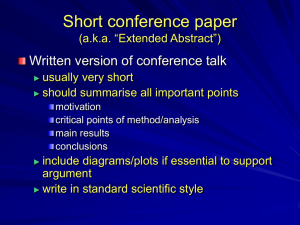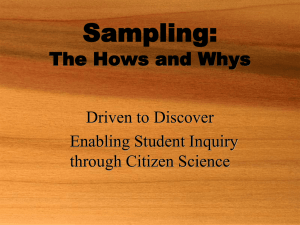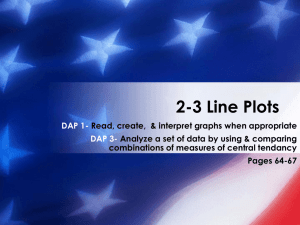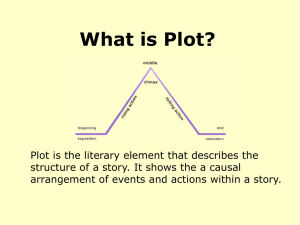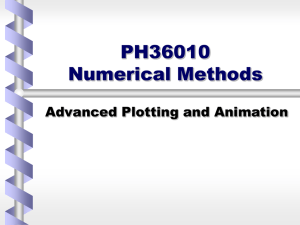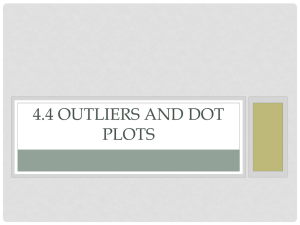Presentation
advertisement
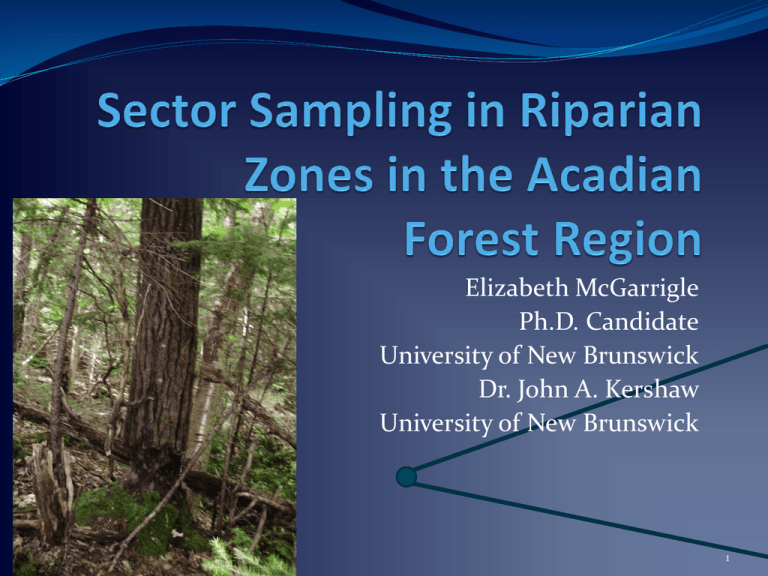
Elizabeth McGarrigle Ph.D. Candidate University of New Brunswick Dr. John A. Kershaw University of New Brunswick 1 Elizabeth McGarrigle Ph.D. Candidate University of New Brunswick Dr. John A. Kershaw University of New Brunswick 2 Sampling in Riparian Zones Typically higher species richness Slope, drainage, soils - heterogeneity To capture full range of species, need to capture full range of growing conditions Sampling high perimeter to area ratio Traditional sampling schemes Boundary overlap/slop over Requires boundary overlap correction Alternatives? 3 What is sector sampling? Developed for use in small patches left after harvest (Iles and Smith 2006) Eliminates bias caused from edge effect No correction required for boundary overlap – plot ends at boundary Plot placed anywhere in patch, random azimuth determined and predetermined angle used to project plot to stand boundary Single or balanced sector 4 What is sector sampling? Developed for use in small patches left after harvest (Iles and Smith 2006) Eliminates bias caused from edge effect No correction required for boundary overlap – plot ends at boundary Plot placed anywhere in patch, random azimuth determined and predetermined angle used to project plot to stand boundary Single or balanced sector 5 Is Sector Sampling Applicable? Advantages in riparian zones No boundary overlap correction required No predetermined sampling location required Possible disadvantages Azimuth down middle of stand = High number of trees Is it efficient? 6 Overall Objective How does sector sampling compare with traditional sampling methods in riparian zones? Ability to quantify: Density Basal area Species composition Options: Implement each method in the field Tree map riparian zone and simulate sampling methods 7 The Riparian Zone 373 meter stretch of stream 1050 trees stem mapped, diameter measured 8 The Riparian Zone 12 species total (balsam fir, largetooth aspen, red maple) 1400 trees/ha 26 m^2/ha 15 cm quadratic mean diameter 9 The Riparian Zone Lots of corners Some dropped tapes 4 hornet/bee nests 10 Sampling Types Circular fixed area plots corrected using walkthrough method Angle count sampling (ACS) boundary overlap corrected using walkthrough method Strip plots perpendicular to stream Sector Sampling Riparian zone divided into 6 sections and sampling types simulated 11 Strip Plots First strip randomly placed in first 20 meters 12 Strip Plots 2nd and 3rd strips each 20 meters downstream Two size strips sampled: 2m 4m 13 Point Locations On Strip On each strip one point location on each side of stream 6 points total Each point: Fixed area, ACS and Sector plots 14 Circular Plots Two sizes sampled: 3.01 meter radius (1/350th of hectare) 4.61 meter radius (1/150th of hectare) 15 Sector Plots Two sizes sampled: 10 ° angle 20 ° angle 16 Centered Balanced Sector Plots Two sizes sampled: 10 ° angle/4 = 2.5 ° per sector 20 ° angle/4 = 5 ° per sector 17 Sampling strategy Type Small Plot Large Plot Section Sample per Section Strip Plot 2 meter full width 4 meter full width All 3 Fixed Area 3.01 m. Radius 4.61 m radius All 6 Angle Count Sample (ACS) Metric basal area factor - 3 Metric basal area factor – 2 All 6 Sector 10 ° angle 20 ° angle All 6 Centered Sector Four 2.5° angles Four 5° angles All 1 with 4 balanced sectors 18 Looking at the Data Observed and predicted graphs of density and species composition By section Overall Overall basal area 6 2 Average error over 6 sections o p 1 i i AverageError Observed density n Observed species comp Average error versus number of trees measured 19 Density Black – larger plots Red – smaller plots Generally all types clustered around observed Plot sizes not significantly different in majority of sections 3/6 sections sector plots are above all other types 20 Density Black – larger plots Red – smaller plots Balanced sector underestimates overall density 21 Species Composition ASH – ash BE – beech BF – balsam fir GB – grey birch LA – largetooth aspen RM – red maple SM – sugar maple SP – spruce STM – striped maple WB – white birch WP – white pine YB – yellow birch 22 Species Composition by Section 23 Species Composition Overall Small Plots Large Plots 24 Basal area Black – larger plots Red – smaller plots ACS and Strip sampling closest to observed Centralized sector is underestimating basal area 25 Average Error of Density Black – larger plots Red – smaller plots Centered sector has lower error and number of trees measured than single sectors Strip plots have lowest error 26 red maple Average Error in Species Composition Black – larger plots Red – smaller plots largetooth aspen balsam fir 27 Conclusions After 1050 trees, 4 nests(lots of stings), some equipment fishing and some simulation… Variability in sector plots in density and species composition predictions Centralized sector plots with balanced sectors performing better than single sectors Strip plots more accurate in predicting overall density and require fewer trees measured than other types 28 What’s next? Are the results consistent? Run simulation of sampling scheme again Different size sector angles Different configuration for the balanced sectors 3 or 4 sectors per point? Optimal angle to use? 29 Acknowledgements John Kershaw – Fisherman, nest marker, dog bringer and simulation coder Questions? 30

